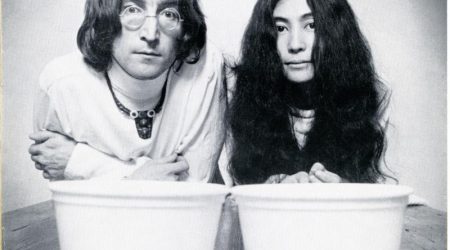[13 Nov 2019]
Online audio is not just about music. With podcasts and audiobooks booming the spoken word is alive, and on the brink of an immersive revolution that offers content creators – and audiences – new levels of creativity and fresh narrative techniques to elevate their output.
Immersive technologies offer creators of spoken word entertainment richer quality audio mixing, a key differentiating factor, and most importantly – better stories through additional narrative techniques to explore storytelling to an avid and captive market that is growing exponentially.
In the video age, sometimes it’s easy to forget that audio remains one of the most consumed media formats, with Nielsen revealing in 2018 that while video streaming may top consumption at weekends, audio streaming remains the dominant medium on weekdays.
While music still dominates the audio market, according to Universal Music Group podcasts are beginning to rival music consumption for audiences, with reports that the amount of time spent listening to music each week has dropped from 32.1 hours in 2017 to 26.9 hours in 2019 prompting the corporate to announce last month that podcasting would form a significant tranche of its content strategy going forward.
According to Barak Moffitt, Executive Vice President of Content Strategy and Operations at UMG: “at current rates of consumption and rates of growth, [podcasts] could potentially rival the share of ear for music consumption. That’s why we want to be in it while it’s in this developing stage.”
The podcasting business is growing fast, generating $479.1 million in 2018 while being tipped to produce more than $1 billion by 2021, according to a recent report from the Interactive Advertising Bureau (IAB) and PwC – with that latest revenue figure representing an increase of 53% in only a year.
The global audiobook market, meanwhile, has seen seven years of double-digit revenue growth, with revenues climbing to $940m in the US and £69m in the UK last year.
All of which means that as competition for headspace in the spoken word market grows, podcast & audiobook creators are increasingly in need of new ways to offer an enhanced, richer, and more engaging experience to connect with audiences and delivering a unique user selling point.
Immersive tools in studio recording and post-production offer the creatives a new and enterprising resource to boost engagement. With the ability to set time and space through audio, the spoken words, and soundtrack composition – you can paint pictures with sound and immerse the listener into places that a standard stereo mix cannot render on its own.
Audio-only narratives, perversely, have better pictures. Because the audience aren’t shown images to portray the storyline, they use the soundtrack as the inspiration that generates a tailor-made picture show in their heads. A collaboration of sound and the human imagination that any big-budget feature would struggle to compete with. Ask yourself the question – when you’ve read a book, and you see the film/TV adaptation – does the production reality ever match up to your imagination of the faces, places and stories one has created in your mind’s eye? In most cases the answer is negative. Immersive tools enhance this experience dynamically into your mind by being able to psychoacoustically story tell.
In Earth: One Amazing Day – The Immersive Experience, our co-production with BBC Studios, we demonstrated how immersive audio can be used to immersive the listener into the story environment … you’re not listening to a perilously frozen island in the South Seas, with 30ft waves crashing against volcanic cliffs into a billowing ocean of ice and surf. You’re hanging off the cliff edge with a million penguins as you feel the waves crash into and over you, the feeling is as intense as being drowned by the sound. It’s only through the Binaural mix that we were able to achieve a narrative ploy that dramatically enhances the story, and doubles down on the listener’s experience.
It is the same with “The Cantuarian” a poem for the City of Canterbury written and performed by Lemn Sissay – where the backing vocals were the Canterbury Cathedral Choir. The sense of immediacy in Lemn’s delivery and his over-theatrical enunciation is underscored by his deep tone, and in juxtaposition to the choir who are placed as though in The Cathedral itself, even though the sense of space and time was captured in the iconic Abbey Road Studio Two (where The Beatles recorded 95%+ of their material).
Immersive audio mixing allowed us to enhance the poem by adding extra dimensions to the mix and the playback so you feel the depth, height, resonance and dramatic space created by the choir as its pushed back, high and wider than the speakers – but focused by the all-embracing voice of God in Lemn’s delivery.
Amazon’s entry to 3D audio – the new echo studio device – offers huge possibilities as the first low cost, easily accessible immersive audio device to hit the market. As a brand new platform with limited available content, it offers a clear open goal for any podcaster or audiobook publisher with the speed, dynamism and know-how to deliver formatted content to the global giant’s Atmos platform.
But with Statista suggesting that 87% of audio currently consumed on headphones, Binaural audio that can provide an immersive experience using any set of existing stereo cans offers the biggest opportunity.
With all Jacaranda Records & Studio output routinely produced in theatrical, home entertainment/nearfield, and binaural mix formats, it’s safe to say we’ve got that covered and are looking to expand our workflows to capitalise on this ever-expanding market. Listen out for more in the coming months.



